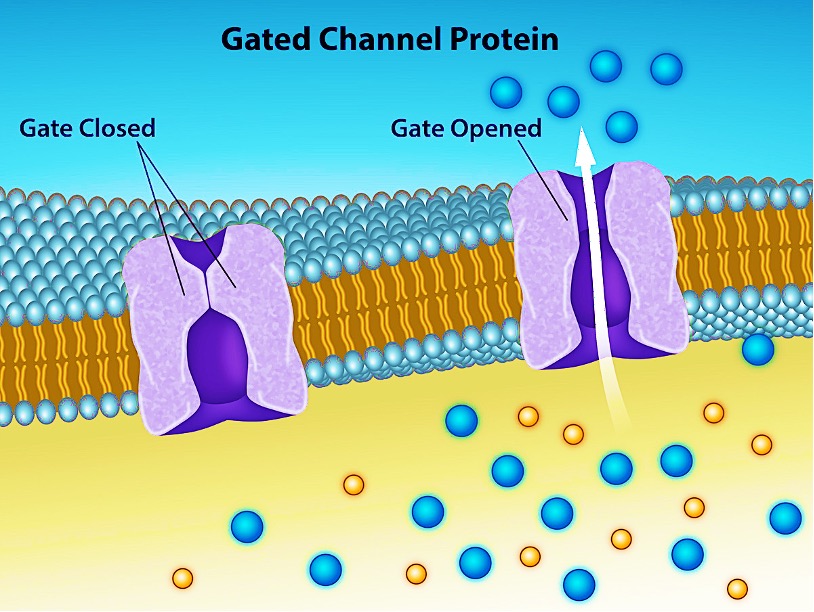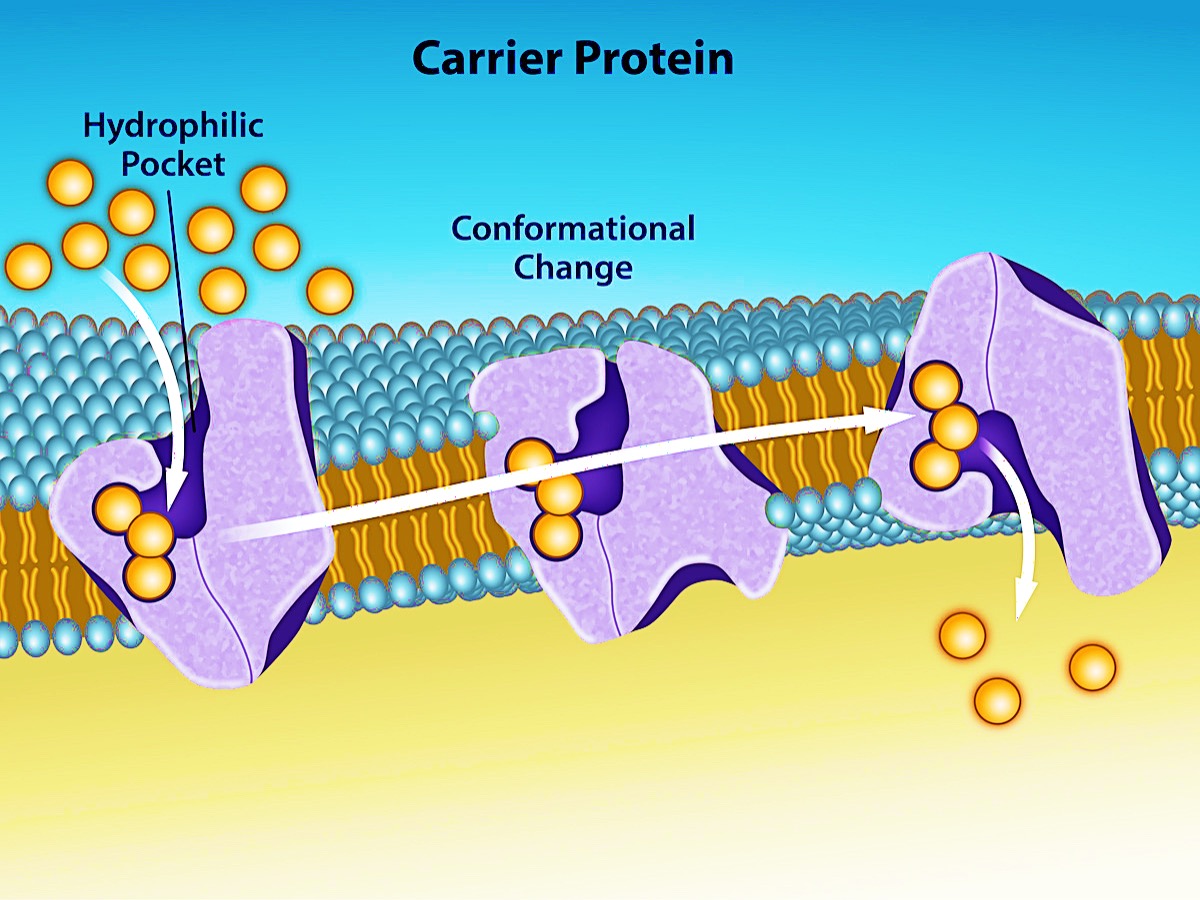31 Facilitated diffusion
On this page
In facilitated transport, or facilitated diffusion, materials diffuse across the plasma membrane with the help of membrane proteins. A concentration gradient exists that would allow these materials to diffuse into the cell without expending cellular energy. However, these materials are polar molecule ions that the cell membrane’s hydrophobic parts repel. Facilitated transport proteins shield these materials from the membrane’s repulsive force, allowing them to diffuse into the cell.
The transported material first attaches to protein or glycoprotein receptors on the plasma membrane’s exterior surface. This allows the removal of material from the extracellular fluid that the cell needs. The substances then pass to specific integral proteins that facilitate their passage. Some of these integral proteins are collections of beta-pleated sheets that form a pore or channel through the phospholipid bilayer. Others are carrier proteins that bind with the substance and aid its diffusion through the membrane.
Channels
The integral proteins involved in facilitated transport are transport proteins, and they function as either channels for the material or carriers. In both cases, they are transmembrane proteins. Channels are specific for the transported substance. Channel proteins have hydrophilic domains exposed to the intracellular and extracellular fluids. In addition, they have a hydrophilic channel through their core that provides a hydrated opening through the membrane layers (Figure 6.5). Passage through the channel allows polar compounds to avoid the plasma membrane’s nonpolar central layer that would otherwise slow or prevent their entry into the cell.
Aquaporins are specialised channel proteins that allow water to pass through the membrane at a very high rate. Not surprisingly, aquaporins facilitate water movement and play a large role in osmosis, most prominently in red blood cells and the membranes of kidney tubules.

Channel proteins are either open at all times or they are ‘gated’, which controls the channel. When a particular ion attaches to the channel protein it may control the opening, or other mechanisms or substances may be involved. In some tissues, sodium and chloride ions pass freely through open channels. In other tissues a gate must open to allow passage.
For example
In the kidney there are both types of channel in different parts of the renal tubules. Cells involved in transmitting electrical impulses, such as nerve and muscle cells, have gated channels for sodium, potassium, and calcium in their membranes. Opening and closing these channels changes the relative concentrations on opposing sides of the membrane of these ions, resulting in facilitating electrical transmission along membranes (in the case of nerve cells) or in muscle contraction (in the case of muscle cells).
Carrier proteins
Another type of protein embedded in the plasma membrane is a carrier protein. This protein binds a substance and triggers a change of its own shape, moving the bound molecule from the cell’s outside to its interior (Figure 6.6), or in the opposite direction. Carrier proteins are typically specific for a single substance. This selectivity adds to the plasma membrane’s overall selectivity. Each carrier protein is specific to one substance, and there are a finite number of these proteins in any membrane. This can cause problems in transporting enough material for the cell to function properly. When all of the proteins are bound to their ligands, they are saturated and the rate of transport is at its maximum. Increasing the concentration gradient at this point will not result in an increased transport rate.

For example
One area of the kidney filters glucose, water, salts, ions, and amino acids that the body requires. This filtrate, which includes glucose, then reabsorbs in another area of the kidney. Because there are only a finite number of carrier proteins for glucose, if more glucose is present than the proteins can handle, the excess is not transported and the body excretes this through urine. In a diabetic individual, the term is ‘spilling glucose into the urine’. A different group of carrier proteins, glucose transport proteins, or GLUTs, are involved in transporting glucose and other hexose sugars through plasma membranes within the body.
Channel and carrier proteins transport material at different rates. Channel proteins transport much more quickly than carrier proteins. Channel proteins facilitate diffusion at a rate of tens of millions of molecules per second. In contrast, carrier proteins work at a rate of a thousand to a million molecules per second.

